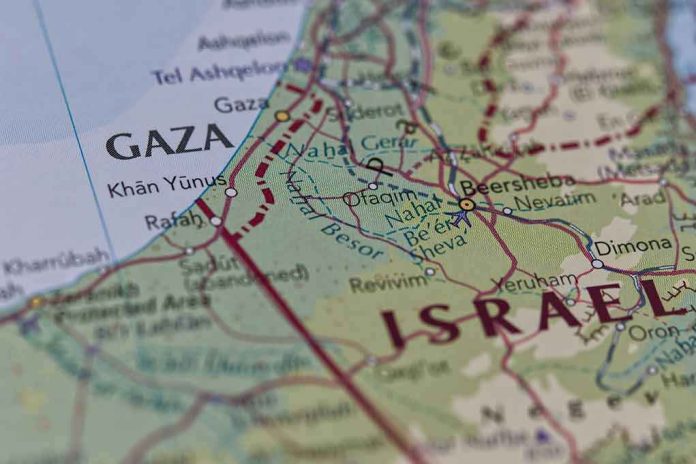
Armed clans are exploiting Hamas’s weakened grip on Gaza to assert control over neighborhoods and resources, threatening to transform the territory into a lawless patchwork of rival fiefdoms.
Story Overview
- Major clans like Doghmush, Al-Astal, and Abu Samhadana have armed wings challenging Hamas authority
- Criminal networks control smuggling tunnels and extortion rackets amid breakdown of law enforcement
- Palestinian Islamic Jihad and Popular Resistance Committees recruit from disaffected youth
- Aid distribution increasingly controlled by local power brokers rather than central authorities
Hamas Authority Crumbles as Clans Rise
Hamas’s control over Gaza has deteriorated significantly following Israeli military operations that degraded its administrative and security apparatus. The terrorist organization’s ability to police Gaza and provide basic services has eroded, creating opportunities for armed clans to reassert themselves. These extended family networks, known as “hamulas,” historically wielded significant social and military power in Gaza before Hamas consolidated control in 2007. Now they’re exploiting the security vacuum to establish their own checkpoints, courts, and governance structures in various neighborhoods.
Multiple reports document armed clashes between clan militias and Hamas security forces throughout 2024 and 2025. The Doghmush clan engaged in violent confrontations with Hamas in southern Gaza, while other family groups have issued statements asserting their right to self-defense and local governance. These developments represent a direct challenge to Hamas’s monopoly on force and threaten to fragment Palestinian authority even further.
Criminal Networks Exploit Institutional Breakdown
The collapse of effective law enforcement has enabled criminal organizations to expand their operations dramatically. Smuggling rings that previously operated under Hamas oversight now act independently, controlling tunnels, weapons trafficking, and goods movement. These networks often overlap with clan structures, creating hybrid organizations that blend family loyalty with profit-driven criminal enterprise. Kidnappings, extortion, and protection rackets have surged as traditional authority structures fail to maintain order.
Aid organizations report increasing difficulty operating in Gaza as multiple armed actors demand tribute or attempt to control humanitarian distribution. Local power brokers have effectively replaced central authorities in managing aid flows, creating opportunities for corruption and ensuring that assistance serves clan interests rather than broader humanitarian needs. This fragmentation undermines efforts to address Gaza’s ongoing humanitarian crisis and creates additional barriers to effective governance.
Militant Factions Compete for Influence
Palestinian Islamic Jihad, the Popular Resistance Committees, and smaller Salafi-jihadist groups have increased recruitment efforts among disaffected youth. These organizations sometimes ally with Hamas against Israel but compete for local influence and access to resources. The fluid nature of these alliances creates additional instability as groups shift allegiances based on tactical considerations rather than ideological consistency.
The fragmentation of authority in Gaza carries serious implications for regional stability and future peace prospects. Experts warn of potential “Somalization” if the power vacuum persists, with Gaza becoming a collection of competing fiefdoms rather than a unified territory. This breakdown of central authority complicates any future political settlement and creates additional security risks for neighboring countries. The situation demonstrates the dangers of failed governance and the difficulty of rebuilding institutional authority once it collapses.
Sources:
Who are the armed clans fighting or backing Hamas in Gaza power vacuum?
Inside Gaza’s Power Struggle: Hamas Confronts Rising Clan Militias





